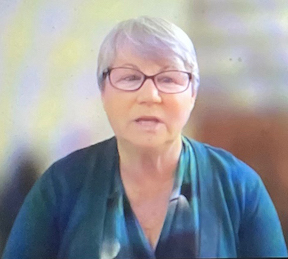U.S. ports should do more to promote maritime education and industry career possibilities with schools and especially focus on elementary schools, according to retired Cal State Long Beach lecturer Laura Kovary. Kovary was one of the first women to graduate from a U.S. maritime academy graduating from the California Maritime Academy in 1978. Kovary taught supply chain management at California State University Long Beach and was an assistant professor at the California Maritime Academy (CMA) who taught ‘Principles of Management, Navigation and Basic Seamanship. Kovary was a Chief Mate with Matson Navigation and also served as a Chief Mate on a ship during Operation Desert Storm, the first war with Iraq. She says her sea-going experience played a pivotal role in providing her with background and experience.

Adopt a Ship
After she completed her sea-going career, this experience helped her win a job at the oil company BP: “I was seven years port superintendent for BP shipping. And I loved that job, too. So, I had some great sea-going jobs that exposed me to the whole world of international trade. You … get a different perspective on people and cultures … and trade and why it's important. And I think it's amazing. I recommend it. I loved the time going to sea. It was either total chaos … really crazy or really boring. You kind of like the boring sometimes too … just standing your watch at night (on the bridge of a ship) and thinking about different things ….”
U.S. ports might also consider supporting a popular program that had been promoted by the International Propeller Club called the ‘Adopt A Ship’ program. This program helps grade school classes … follow the progress of a particular U.S. or foreign flag vessel.
In Kovary’s case, she sailed on U.S. flag vessels: “The captain would pass off the ‘Adopt A Ship’ letters to the Third Mate to take care of … I remember answering a lot of the questions for an elementary school class … There was a teacher in the Midwest who had developed her whole curriculum around the ‘Adopt A Ship’ program. And I think that more schools need to do that, especially the schools on the coasts. … I think it's also important for those inland schools because they don't understand how things get to them … There's the whole process of the supply chain with … shipping, trains and trucks to get … commodities to them. To me, elementary school is where you start and you start with some basic lessons, such as … what world trade is; how do things get from places that they're manufactured or places that they're grown to their customers and talk about what products are grown in different parts of the world.”
Kovary said the ‘Adopt A Ship’ program allows students to learn more about geography … following locations of ships from port to port as well as applying math to calculate the speed of the ship and its fuel consumption that could be obtained from the Noon Report on vessel speed and location: “So the Noon Report tells everybody where the ship is, how far they've traveled in the last 24 hours how much fuel they burned and the arrival time at their next port, or their ETA expected time of arrival. So, those are basic math lessons. So, you can, … see the ship has gone how many miles in a day. Then you can talk about nautical miles versus statute miles, and you know, what the difference is. And … for little kids, you can just start with the basic math. If you go so many miles in a day, how many miles are you going in an hour? The people on the ships don't have a lot of free time, but sending a quick email now and then, or being on the Noon Report distribution list for schools so … the kids in the school can have a world map and then each day look at the latitude and longitude of where that ship is and just put a pin in it.”
Maritime schools can be another promoter of the ‘Adopt A Ship’ program and increase maritime awareness: “I think that would be great, because the maritime schools have the contacts through their alumni who are working in the industry. They can also do outreach to schools in their states and communities.”
Port Reach
Ports such as Los Angeles and Long Beach have the money and resources to help facilitate this type of program. A key element in convincing the schools is getting buy-in with teachers and here Kovary suggests an orientation program for teachers that would incentivize them to teach the ‘Adopt A Ship’ program: “I know the teachers have to do … what they call … additional training every year. So, maybe work with that and have an eight-hour in-service day … with teachers where you're talking about how this type of curriculum can help their students understand … lessons in a real-world situation. So, again, it's just … introducing students at a younger age to what World Trade is and how they can be a part of it.”
The effect of this type of education is that it also creates communication with parents and helps build support for maritime infrastructure investments in ports, waterways, roads and bridges: “When kids are in … second, third, fourth grade, they go home. And … they're going to start talking to their parents about what they did that day. And that is going to help their parents understand what's out there too. And the parents are the ones who vote … for (elected representatives who vote for) infrastructure bills and …. other programs that are important to the United States and our trade issues.”

